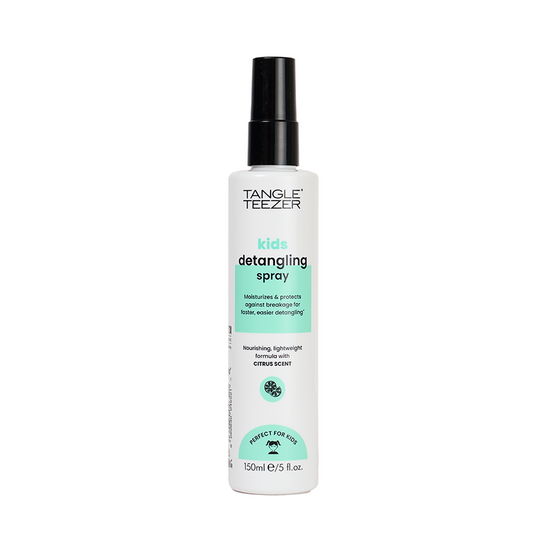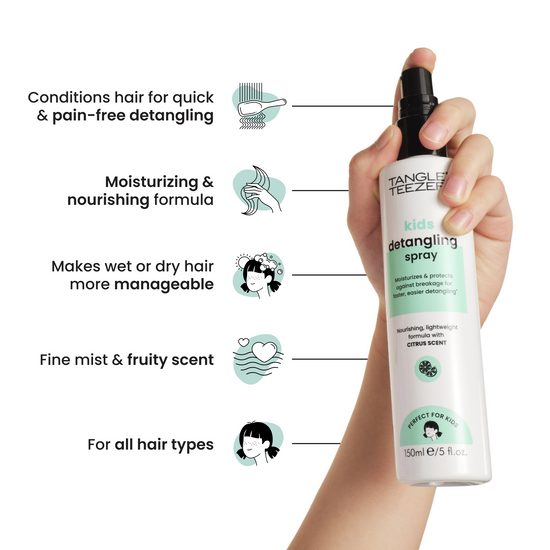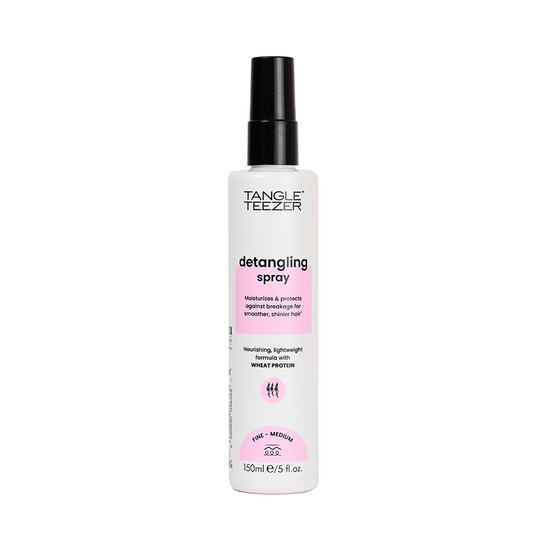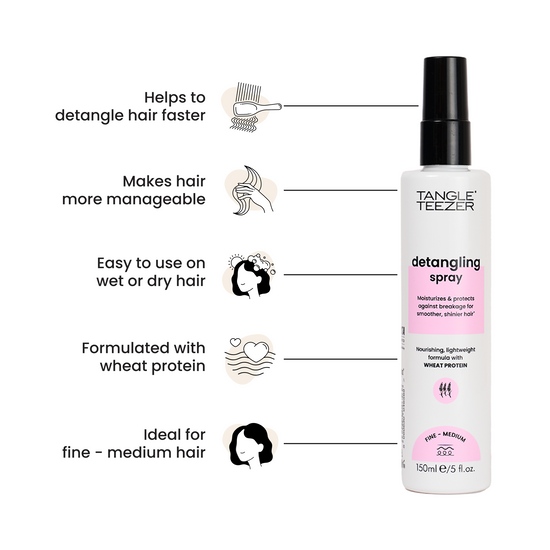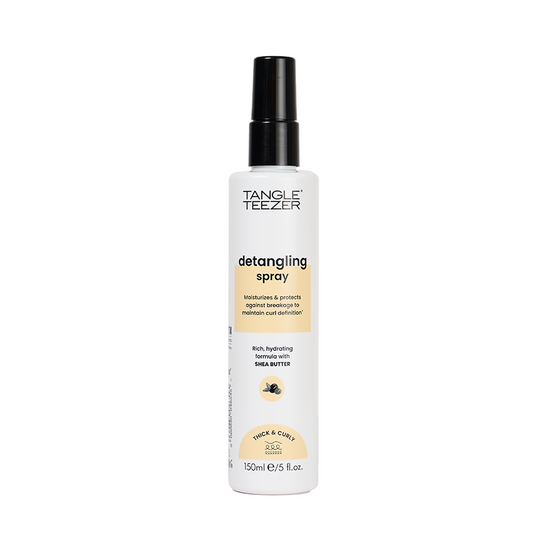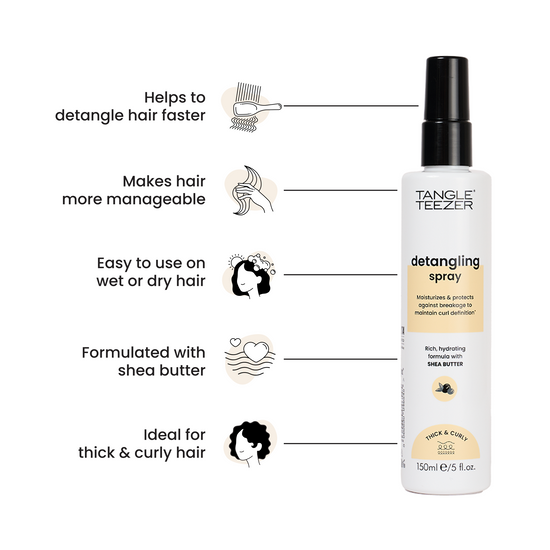If you’ve been wondering if you have porous hair and how to manage it, and you’ve arrived at this very page for answers, then this article is for you! High-porosity hair can sometimes feel as dense as a sponge, but it’s more common than you might think, especially among people with curly or wavy locks.

Porous hair has small gaps between its cuticles, which means it holds moisture and oils less effectively than non-porous hair. As a result, it dries out much faster than usual and is more prone to breakage. We love curly or wavy hair (in fact we love every hairstyle), but sometimes this comes with some issues. If you think you have signs of high porosity hair, don’t worry — you aren’t alone. Luckily, there are many things you can do in order to make your curls even more luscious and bouncy!

What is high-porosity hair?
Simply put - high porosity means that your hair cuticles are very open, allowing them to absorb extra oil from your scalp and other products easily. This can lead to hair that is dry, damaged, and has a tendency to tangle easily. When you have high porosity hair, there is an imbalance. Your hair is porous enough to let the moisture out but not porous enough to let the moisture in. The result? Your hair may be dry, brittle, and prone to breakage. Also, even if your hair type is curly, kinky, or wavy, you can still have high porosity hair. Hair texture does not necessarily affect porosity. For those who suffer with high-porosity hair, let’s find out the best ways for managing your locks...

Tip #1: Repair your hair with protein and moisture
Protein and moisture to the rescue! One of the best ways to repair porous hair is with protein treatments. At the same time, you should make sure that your hair is also properly hydrated. Porous hair is more likely to suffer from an overly dry state, which can lead to even more breakage. You should also use shampoos and conditioners that contain moisturizing ingredients (like proteins). You’ve probably heard it time and time again, but try washing your hair less often, too — this will help reduce the amount of moisture lost from your hair each day.
Tip #2: Try out conditioning masks
Give you and your hair a little bit of TLC and mask up! Some people recommend using a hair mask once or twice a week for porous hair. Conditioning masks are a great way to replenish your hair’s natural oils and strengthen the strands at the same time.
Keep in mind - what works for one person may not work for you! You should try out different brands and types of masks until you find one that works best for your hair. For maximum results, try applying a protein-based leave-in conditioner to your hair before going to bed. Leave the mixture on your hair for at least 30 minutes and then rinse your hair thoroughly.

Tip #3: Use heat-protecting sprays
Did you know porous hair is more likely to break when exposed to high temperatures? Porous hair tends to be dryer than non-porous hair — so it’s at a higher risk of damage when exposed to heat. If you want to know one of our sneaky tricks, one of the best ways to protect porous hair is by using a heat-protecting spray before using a blow dryer or hair straightener. You can also use a thermal protection spray if you plan on using a curling iron or a hot roller. Simple, but effective! Fancy trying out a DIY mask? Check out our blog on How To Make Homemade Hair Masks.

Tip #4: Opt for products for high porosity hair
This may seem like an obvious tip, but it’s still important to note. You should try to avoid porous hair care products that are heavy-handed with the oils.
Shampoos and conditioners that promise to provide your hair with a “boost” of extra oils won’t help porous hair. They’ll just make your hair even more oily... High-porosity hair is already prone to becoming oily — you don’t want to make that problem even worse!
Instead, you should look for products that don’t contain too many oils. You should also avoid products that contain alcohol. Alcohol can dry out your hair even more, especially if you have porous hair.
Tip #5: Don't use heated hair tools
Skip the heat! Another sneaky culprit of drier hair is using heated tools which can make hair more prone to breakage. This is especially true if your hair is already dry and porous!
In an ideal world, we’d say air-dry, but if you use a hair dryer, try to keep it at a distance of around one foot from your hair. You should also use it for as short a time as possible or, for curlier hair, using a diffuser can help protect your hair from excessive heat. Heatless hairstyles are a great way to give your hair a bit of volume without damaging your hair. Our How To Get Curly Hair Overnight blog is full of helpful tips.
If you use a hair straightener, make sure that you apply a heat protectant spray before using it. You should also use the straightener on a lower heat setting. For curling irons, try to keep the temperature as low as possible. Also, be sure to wrap your hair around the iron as loosely as possible. At the end of the day, we’d say the less heat the better, but we know this isn’t always realistic.

The takeaway
If you’ve made it this far, you’ll have found out that high porosity hair is drier, more fragile, and less elastic than normal hair. But you don’t have to stress — there are many things you can do to make your hair healthier. You can repair your hair with protein and moisture, try out conditioning masks, use heat-protecting sprays, and stay away from porous hair care products. You should also avoid using heated hair tools if you have porous hair and use our Fine & Fragile haircare range, of course. There’s no use fretting about porous hair – it’s easily manageable and can make your hair healthier and bouncier in the long term!
